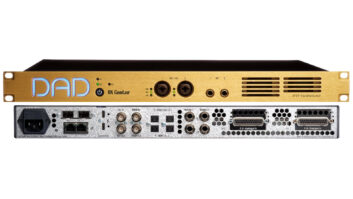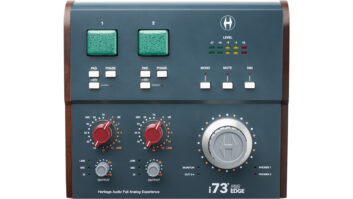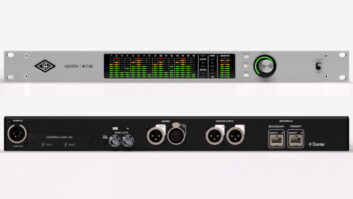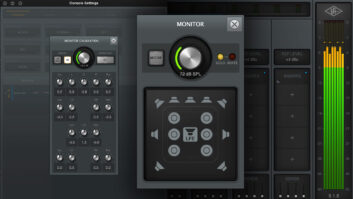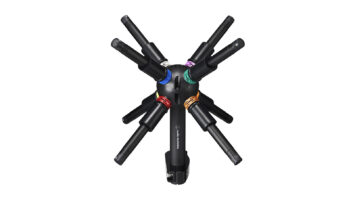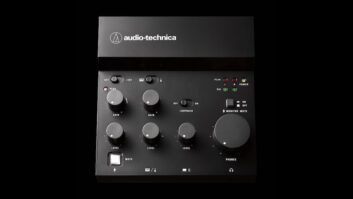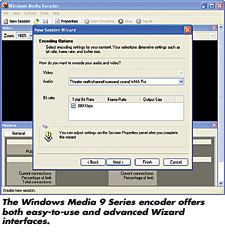
Two years ago at NAB, Microsoft had a relatively small booth tuckedinto the very last row of the newly opened South Hall, sharing spacewith Steinberg, M-Audio and a couple of video companies. There wasn’t alot of foot traffic, but there was considerable buzz throughout theconvention center about a Microsoft codec that would deliverhigh-resolution 5.1 audio, code-named “Corona.”
Last year, Microsoft moved up in the South Hall and filled out amuch larger booth, again with partner companies, and considerably moretraffic. Corona was re-christened Windows Media 9 Series, andbroadcasters and audio types alike filtered through to figure out howthis technology might fit into their operations.
This year, Microsoft has quite simply leaped into the forefront oftechnology development for new-media production and distribution.
It should come as no surprise that Microsoft would enter theprofessional video and audio industries. The company has always focusedits technologies high and low, from enterprise solutions in the serverrooms of Fortune 500 companies to the giveaway players found onmillions of desktops worldwide. In our world, this means providing themeans for producing and encoding high-resolution audio and videocontent, along with mass distribution on physical media or over theInternet.
Most consumers and professionals at this point are familiar with thedownload and streaming capabilities of the cross-platform Windows MediaPlayer. Far fewer, however, are familiar with the range of capabilitiesinherent in the Windows Media 9 Series of codecs. And it is here, inour tiny industry, that Microsoft is making its push.
Actually, the company began its push in video a couple of years ago,concentrating on digital cinema, digital dailies and high-def videoproduction. At the recent Sundance Film Festival, five films wereprojected in the Windows Media Video format. And film studios,recognizing the surge in LCD and plasma displays for home theater, havepiggy-backed WMV HD discs, which can deliver up to six times theresolution of conventional MPEG-2-encoded DVDs, onto more than 16dual-disc DVD titles (including Terminator 2 and Standing inthe Shadows of Motown).
Despite the hype surrounding the brave new world of digitaldelivery, Microsoft still sees value in physical media. The DVD Forumrecently named VC-9, the underlying video compression technology usedin the WMV-9 codec, as a mandatory format on the next-generation HD-DVDdevices. And at the 2003 IBC show, Microsoft made its video compressiontechnology available as an open international standard. Last month atNAB, the company announced that SMPTE has elevated VC-9 to CommitteeDraft status.

“We’ve found that the benefits Windows Media 9 Series bringsto pro video can be even greater than for pro audio, simply becausewith HD video production, the demands on the PC are so much higher thanthey are with stereo or multichannel audio production,” saysSteve Sklepowich, director of pro marketing, digital media division, atMicrosoft. “Clients can review HD-quality video with 5.1 audiousing WMA9 Pro without having to purchase a $75k HD tape deck. Then,producers have the ability to deliver high-def secure dailies, whetherover a network or via physical media, and expand their reach to DVD,Web, digital signage or digital projection. Video post-productionhouses and broadcasters spend millions of dollars today shuttling VHStapes around for client review. Windows Media 9 Series can bringimmediate and significant cost savings to the productionprocess.”
Cost savings, speed, efficient workflow — these are themantras in today’s production chain, whether for video or audio. Filesare shared on networks, shuttled to FTP sites and reviewed in New Yorkfor drive-time delivery in L.A. FedEx is no longer fast enough. Clientsdon’t have time to leave the office and approve the mix. And a produceris working on three projects simultaneously. This is where Microsoftsees opportunity. And as audio follows video, the same rules apply.
The Windows Media 9 Series audio codecs run the range of encodingoptions, from WMA9 Voice for playback at 20 Kilobits per second to WMA9Lossless for archival purposes, approaching 3:1 compression. Most audioprofessionals would likely be working with WMA Pro, which provides 5.1or 7.1 capability, 24-bit/96kHz sampling, and download or streamingdelivery at anywhere from 128 to 768 Kbps. It also supports one-ortwo-pass constant bit-rate (CBR) and variable bit-rate (VBR)encoding.
“For archival purposes, our Lossless codec makes the mostsense,” Sklepowich explains. “128 Kbps is intended for themost constrained network delivery; 192 Kbps is well-suited forstreaming at decent quality or for proxy review; 384 Kbps becomessuitable for review or high-fidelity delivery such as home theater orD-Cinema; and 768 Kbps is for high-fidelity delivery and archivalpurposes. But these are generalizations, and it’s going to varyaccording to the material and encoding parameters, such as VBR/CBR,single-pass or two-pass and sampling rates. It’s really up to the audioengineer to be the judge.”
Because security is a major concern, whether for client approval orconsumer delivery, the WMA Series includes extensive built-in digitalrights management — royalty-free.
One of the geniuses in Microsoft’s development efforts, whether forconsumer or professional applications, is that they make things easy onusers. The WMA encoder is already built into Steinberg Nuendo,Digidesign Pro Tools and Adobe Audition. M-Audio Delta 1010 and EchoLayla 24 cards include drivers for capturing live or sourced audio.Many more manufacturers are certain to follow.
“Hopefully, software vendors will see the value in thisthemselves,” Sklepowich says. “There is no cost associatedwith licensing the Windows Media Encoder or the Windows Format SDKs[software development kits], so anyone is free to download andimplement them within their product. And the Windows Media 9 Serieslicensing is built into the cost of Windows, so when you buy anapplication like Pro Tools or Nuendo based on Windows, Digidesign andSteinberg do not pay use fees. When producers deliver their WindowsMedia content to PCs, again there are no additional fees. And ourlicensing is flexible for non-Windows platforms, as well.” (Therehave been hints of third-party development for Linux and Mac OS.Details for licensing are on the Microsoft Website.)
There have been numerous efforts in remote delivery and approvalapplications during the past decade. EDnet burst onto the scene in theearly ’90s with dedicated, secure lines. But that proved prohibitivelyexpensive for all but top-end studio projects. Liquid Audio and RocketNetwork are two companies that surfaced with relatively short-livedefforts at remote collaboration and delivery. And, of course, countlessproducers have worked out their own means for mix approval and fileexchange. But nobody has yet put together as comprehensive andfar-reaching a scheme as Microsoft.
“We see great opportunity in two main areas,” Sklepowichconcludes. “First, for the pro audio world, in addition to theclient review and collaboration applications, WMA9 has become pervasivein the music service arena. WMA9 and WMA9 Pro can be used today tomarket traditional new or existing CD audio releases on the Web. We seetremendous growth here.
“Secondly, we think there is a real opportunity in deliveringmultichannel audio using WMA Pro on DVD-ROM to complement the great HDvideo that we can get with WMV HD. We’ve done a lot to advance the HDexperience today for consumers on PCs. For example, WMV HD offers up tosix times the resolution of DVDs today with up to 7.1 surround soundwith WMA Pro.”
During the past couple of decades, for a variety of reasons,Microsoft has become the company that everyone loves to hate. But thatshouldn’t diminish the company’s recent efforts in media productiontechnologies.
While the company has been primarily concentrating on mass deliveryfor D-Cinema, broadcast and home-theater applications, it only takes abit of imagination to see the possibilities in production. For post,sound designers in various cities can shuttle elements for approval bya supervisor in L.A. In the commercial world, the account exec canapprove a finished spot from an office in Chicago or Minneapolis fornational delivery that day. Broadcasters and Webcasters can move largefiles around a network without hogging space and then deliverworldwide. In music, it’s already happening among high-end producersfor mix approval, probably more than Microsoft even knows. And in thetrenches, in the project studios and home-based facilities across thecountry, you can bet Windows Media 9 Series is being used in creativeand interesting ways.
Tom Kenny is the editor of Mix.


